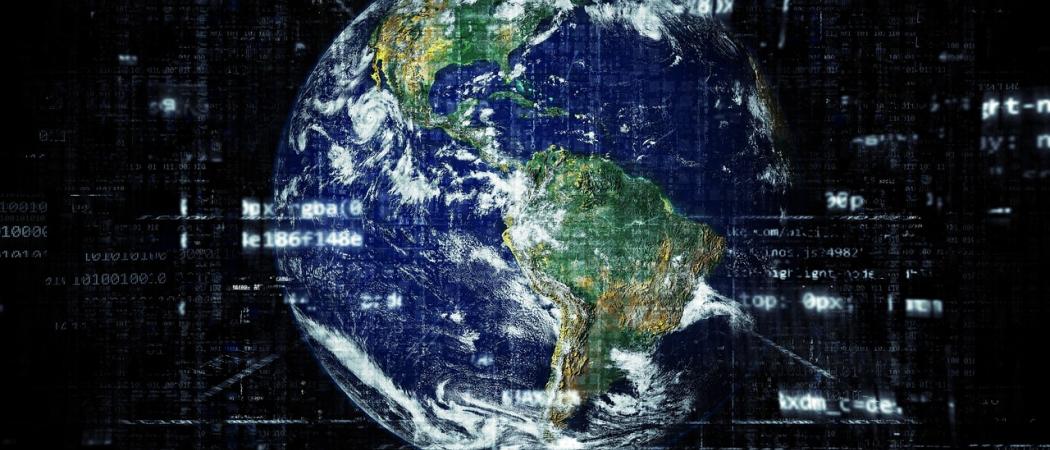A new digital replica of the Earth is designed to take the EU’s capacity to contend with climate change to a completely new level

The EU has officially launched its Destination Earth (DestinE) system, paving the way for the creation of a digital replica of our planet by 2030. DestinE’s main goal is to help Europe to better respond to major natural disasters, adapt to climate change and assess the potential socioeconomic and policy impacts of such events. As a tool that is actionable and, above all, accessible to all, it will also open up new opportunities for scientific research.
“It places a tool in the hands of a wide community, both scientists and non-experts,” said Margrethe Vestager, Executive Vice-President for a Europe Fit for the Digital Age at the European Commission, at the launch on 10 June 2024 at the LUMI Supercomputer Center in Kajaani, Finland. “It is truly not a tool for the few, but for the many.”
The launch of DestinE was “an extraordinary opportunity to see the future in the making”, she added. “Destination Earth is different from any other Earth modelling exercise. It will bring our capacity to fight climate change to a completely new level.”
A flagship initiative of the European Commission, DestinE has been implemented by the European Centre for Medium-Range Weather Forecasts (ECMWF), the European Space Agency (ESA) and the European Organisation for the Exploitation of Meteorological Satellites (EUMETSAT), under the leadership of DG CNECT and supported by a strategic partnership with EuroHPC Joint Undertaking. It was initiated in 2022 and, after two years of development, its first version is now up and running.
From its inception, Destination Earth was aimed at supporting the needs of policymakers. “The system is clearly there to support policy development,” highlighted Phil Evans, Director-General of EUMETSAT. “It brings together different data sources and data sets and has the capacity to distil all this data into something useful.”
Predicting events in high resolution
One of the key benefits of DestinE will be to enable much more granular, and therefore accurate, climate modelling and forecasting. “Until now, we had a bit of a blurry image and were limited in scope,” said Florence Rabier, Director-General of ECMWF. “Now we have a much more powerful camera with much higher resolution, so to speak.” DestinE can simulate globally how extreme events will unfold over a timescale of a few days ahead and how the climate will evolve over the next decades with a spatial resolution of just 5 kilometres. It can also zoom over extreme events unfolding over Europe at a resolution of just a few hundred meters.
Having such a tool is of increasing importance in the current changing climate, pointed out Rabier. “2023 was the warmest year on record. We are entering uncharted territory, and we need new tools. Destination Earth is the game changer.”
The system can run bespoke scenarios and highly accurate simulations, allowing users to better assess the potential impacts of climate change. This was stressed by various stakeholders speaking at the launch event, including Bart van den Hurk, Co-Chair of Working Group II of the Intergovernmental Panel on Climate Change (IPCC), who expressed IPCC’s hopes to use DestinE for its next report. “Climate crisis is a crisis of our imagination. The true picture of what climate change looks like is crucial to help society deal with these impacts,” Van den Hurk said via a video message.
DestinE is a product of the EU’s Digital Strategy, which led to the deployment of the Europe's High-performance computers Joint Undertaking, including the LUMI supercomputer in Kajaani. The entire initiative is “a clear demonstration of the power of European cooperation”, stressed Kimmo Koski, Managing Director of CSC-IT Center for Science. “DestinE is a highly accurate digital model of the Earth to monitor, simulate and predict the interaction between natural phenomena and human activities. This requires combining vast amounts of data from various sources, which in turn requires exceptional computational power – that only the likes of LUMI can provide.”
Applying AI algorithms at scale
Computational power and physics-based Earth system modelling, however, aren’t the only things fuelling DestinE’s fast development. As was mentioned by nearly every speaker at the event, Destination Earth is harnessing the rapid progress in artificial intelligence (AI) and machine learning.
“It is an amazing initiative that has been developed at a great speed,” said Karl Hamilton, Head of Data and Information Services Programme of the European Environmental Agency. “It is a game changer to run machine learning and AI algorithms at a scale we never could before, to test adaptations in a way we never could before. It means that the EU continues to be a leader in environmental and climate challenges around the world.”
“The story of Destination Earth is the story of European’s innovation leadership,” concluded Executive Vice-President Vestager. “There are so many people and organizations to thank for this. That is the magic. With three supercomputers , Europe has nothing to envy the rest of the world. Beyond Destination Earth, the supercomputers are fuelling Europe’s digital economy and Europe’s capacity to lead in artificial intelligence.”




 A unique international forum for public research organisations and companies to connect their external engagement with strategic interests around their R&D system.
A unique international forum for public research organisations and companies to connect their external engagement with strategic interests around their R&D system.